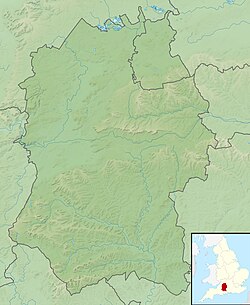| Alvediston Manor | |
|---|---|
 | |
| Type | House |
| Location | Alvediston, Wiltshire |
| Coordinates | 51°00′41″N2°02′07″W / 51.0114°N 2.0352°W |
| Built | c.1750 |
Listed Building – Grade II | |
| Official name | The Manor, Alvediston |
| Designated | 6 January 1966 |
| Reference no. | 1130703 |
Listed Building – Grade II | |
| Official name | Walls, gates and gate piers to the front of Alvediston Manor |
| Designated | 27 July 1985 |
| Reference no. | 1130704 |
Listed Building – Grade II | |
| Official name | Garages at Alvediston Manor |
| Designated | 27 July 1985 |
| Reference no. | 1318669 |
Alvediston Manor, Alvediston, Wiltshire, England is an 18th-century house. From 1968 until his death in 1977, it was the home of the former prime minister Anthony Eden. The manor is a Grade II listed building.
